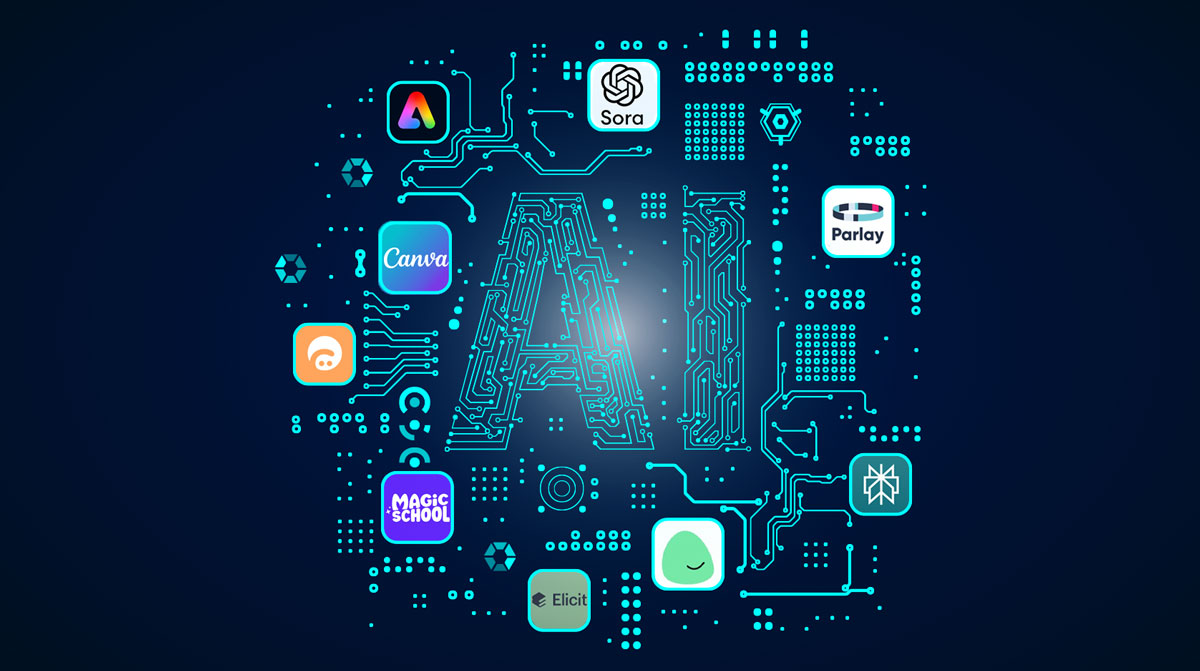9 AI Tools for Back to School
Used in concert with traditional teaching methods, these resources for creation, instruction, research, and grading can make learning more dynamic.
|
|
|
Each new school year, teachers come to the library to find out what’s new and interesting in technology. Consider recommending these nine AI resources for creation, instruction, research, and grading.
Creation tools
Adobe Express AI: Adobe has long been a favorite to create graphics and signs. Recently added tools include Generative Fill, Text to Template, Translate, Drawing and Painting.
Canva’s Magic Design: Canva released this AI text-to-design tool last year and has now added an image generator to support it.
Sora: This text-to-video tool will make animated videos in response to a text prompt.
Instructional tools
Parlay Ideas: This free instructional platform for teachers is designed to facilitate class discussion. It can track participation in verbal and written discussions and is a great tool for tracking participation in Socratic seminars.
Curipod: An AI-driven lesson planner, Curipod specifically focuses on inquiry and emphasizes joy in learning. It offers a variety of templates to generate custom lessons and templates to edit.
Magic School: This platform aims to help with everything teachers might need. It can write and format syllabi, compose sentence starters, craft parent emails, create standardized test-esque questions, and help with other administrative tasks.
Research tools
Elicit: This AI research assistant has some impressive credentials and boasts 90 percent accuracy. It is excellent at finding, summarizing, and analyzing research papers. However, Elicit struggles to find facts that do not appear in academic papers.
Perplexity: Possibly the next generation of search engines, this chatbot searches the web but will also help narrow the search and provide citations for responses. Perplexity also generates text, image, and code.
Grading
ClassCompanion: An AI grader. While it is possible to train chatbots to grade on a rubric, ClassCompanion skips the training steps. It also generates feedback, tracks data, and engages in discussion. There are some considerable privacy concerns here, but it's worth noting that this is an emerging use of AI.
Recommending these tools is also an opportunity to chat about approaching AI tools through a critical and ethical lens. AI tools should be integrated judiciously and in concert with traditional teaching methods. It is also crucial to address student privacy concerns and the responsible use of these technologies. Ultimately, its successful implementation in the classroom strikes a balance between leveraging AI’s potential and maintaining the human touch that is fundamental to the art of teaching.
IdaMae Craddock is a librarian at the Community Lab School in Charlottesville, VA.
RELATED
The job outlook in 2030: Librarians will be in demand
The job outlook in 2030: Librarians will be in demand
ALREADY A SUBSCRIBER? LOG IN
We are currently offering this content for free. Sign up now to activate your personal profile, where you can save articles for future viewing







Add Comment :-
Be the first reader to comment.
Comment Policy:
Comment should not be empty !!!